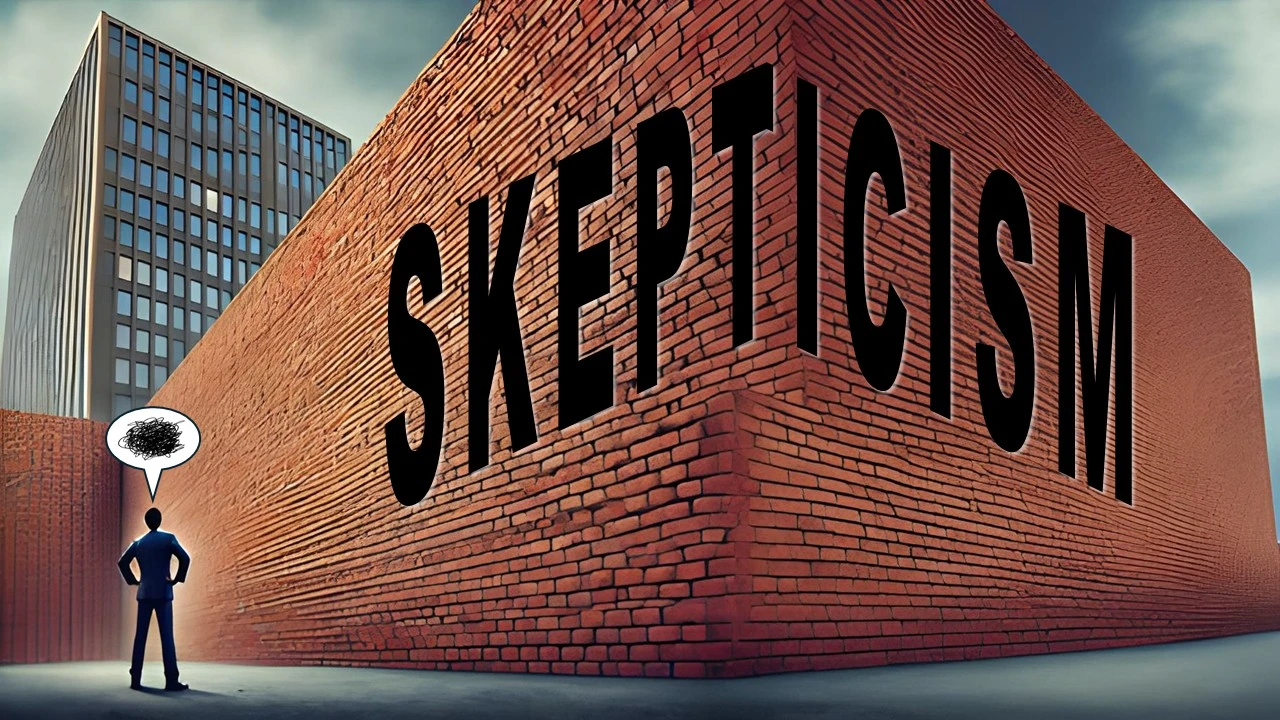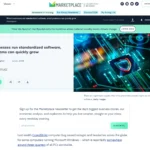The Power of Curiosity
Way back in 2011, I was wandering through a trade show, numb from the identical sales pitches. Then I saw a booth advertising the “Next Generation Firewall.” What the heck was that? As a cybersecurity geek, I had to find out more.
I trotted over to the booth, which was hopping with excitement and activity. I listened to a passionate and absorbing presentation from the company’s founder. This was the coolest thing to come along in cybersecurity in years. The company was a startup, named Palo Alto Networks (PAN). PAN is one of the largest cybersecurity companies in the world today.
While PAN’s technologies did not live up to the hype, their messaging was spectacular. The concept of a “next generation” security technology was catnip to buyers desperate for something that could stop attacks. This messaging was so effective, buyers were rushing to buy their products, infuriating PAN’s larger, more established competitors.
The Wall of Buyer Skepticism
When companies (especially startups) bring a new product (or service) to market, they face an imposing set of disadvantages. A lack of people, money, reputation, and customers all conspire to keep paying customers away. However, the most insidious obstacle is Buyer Skepticism. As a startup, you are nobody. Prospective buyers have no reason to trust you. Why take a chance on a startup when there are larger, more established providers?
Consequently, any startup GTM strategy must address how the company will overcome buyer skepticism. This was exactly the conundrum PAN faced in their early days. Their solution was to sneak right past the wall, exploiting one of the most potent human weaknesses: curiosity.
Evaluating a Product
When buyers evaluate a company and its products, they will consider a wide variety of factors. However, we can simplify these factors into four categories (which conveniently begin with the letter “c”):
- Credibility: Is the company trustworthy? Does it have references? Do the people at the company sound and look like they know what they are doing?
- Capability: Does the company’s products work? Do they integrate with other technologies? Do they relieve pain? Can the company prove that?
- Capacity: Is the company able to deliver what they say? Do they have the people, relationships, and network to function?
- Cost: Are the prices and terms reasonable? Does the company have the financial resources to delivery capability and capacity.
When a company succeeds in all four areas, they usually make the sale.
Most startups and founders focus their energy on building capability and capacity, which makes sense. Without a product or service everything else is moot.
However, once the product is working and the company is ready to sign up customers, it is critical to start building credibility.
Established competitors already have credibility. This is why buyers feel more comfortable buying a mediocre product from a trusted brand versus an innovative product from an untrusted company. Credibility allows a company to pass over the Wall of Skepticism.
Using Curiosity to Build Credibility
Building credibility is exceptionally difficult, unless a startup can overcome Buyer Skepticism. This is where curiosity becomes your superweapon.

- Define a strong vision for your products and services
- Pique curiosity with enticing words and ideas
- Reassure the prospect with expertise and empathy
- Close the deal
Let’s step through this strategy.
Define a Vision
Why? This is the ultimate question all startups must answer about themselves and their products.
- Why you?
- Why your product?
- Why are you better than what is already out there?
- Why not your better funded, more established competitors?
- Why now?
- Why are you doing this?
As the marketing guru Simon Sinek says, “people don’t buy what you do, they buy why you do it.” To make buyers curious, you must know why you are interesting.
Consider Disney’s vision statement: “to make people happy.” That is a simple, strong answer to why: “Why does Disney exist? To make people happy.” Although, considering the last Star Wars movie, their success in meeting that vision is debatable.
Exploring these why questions helps a startup understand why they are unique.
Action Plan for Building Vision
- Get your key team members or advisors together
- Find compelling, concise answers to those questions asked earlier
- Document those answers
- Ensure everybody in the company can repeat those answers with conviction
Be careful with your answers. Keep them concise and focused on customers, not yourself or your investors.
Pique Curiosity
Modern buyers are overloaded with options, sales pitches, and marketing content. After a while, all the marketing content sounds the same.
Curiosity is both a strength and weakness. While curiosity can make people seek out answers to vexing problems, it can also make them lower their defenses. This is why hackers use enticing emails to convince people to click on malware. Curiosity makes people click.
Startups can exploit curiosity to sneak into a buyer’s mind and past the Wall of Skepticism. The buyer must see or hear a word, phrase, artwork, or design that instantly makes them think, “What is that?” or “I want to know more about that!”
To accomplish this, a startup must sound intentionally different and unique. PAN used the phrase “next-generation,” Nike invented the phrase “Just Do It,” and Apple was “Think Different.” All of these were unique phrases that made people want to know more about the brand. You do not want to reveal your entire vision, merely tease it.
Action Plan to Create Curiosity
- What is a word, phrase, or idea you can use that makes people curious?
- Do those words reflect the company’s vision?
- How can you deliver those concepts effectively?
Be careful that your words do not create confusion. Using obscure, obscene, or outlandish phrases may seem funny, but they may repel buyers.
Demonstrate Credibility
Once a curious buyer approaches, you must quickly demonstrate credibility. This means rapidly accomplishing two things:
- Show you understand the customer’s pain
- Show that you can alleviate that pain
Only a person with extensive domain expertise can do this. Consequently, startups must place intelligent, experienced people “upfront” to engage with potential buyers early in the sales process. These “pre-sales” experts must be able to start and maintain engaging conversations with prospective buyers. Mostly, they must be able to reassure the customer they are capable and credible.
Pre-sales experts are the single most important component of any go-to-market strategy. It is a perfect role for a founder, which is exactly what PAN did back in 2011. They deployed their founder Nir Zuk into the booth to talk directly with prospective buyers. Zuk is a brilliant and passionate engineer, who can instantly create credibility. Zuk continues to play a key role in evangelizing PANs products to this day.
Curiosity followed with credibility supercharges your GTM efforts.
Action Plan for Intelligence Upfront
- Ensure the first meeting with all potential customers includes a subject matter expert
- Ensure these experts:
- Communicate the company’s messaging and vision
- Show the customer they understand their pain
- Demonstrate their ability to alleviate that pain
For more information about building rapport with customers, see How to Get Sales Prospects to Discuss Pain.
Close the Deal
Once the Wall of Skepticism is down and credibility is established, it is all downhill from there. The final stage is to pivot to a product pitch, reassure the buyer you can solve their problems, and close the deal.
In this final phase, be careful not to destroy the credibility you built. You want to sound confident, not desperate. Desperation is repulsive to buyers. Allow the buyer to drive the product demonstration. Let them explore the capabilities. Show confidence in your products, even if they are not perfect.
Once this stage is complete, you should be sending a quote or proposal to the customer, ready to close the deal.
Conclusion
Buyer skepticism is a massive impediment for startups entering the market. Spending millions on far-reaching marketing campaigns to reach potential buyers may feel like the right thing to do, however it rarely works. Most buyers are not going to take a small startup seriously, regardless of how many emails you send them.
Conversely, unique, targeted messaging is relatively inexpensive to produce and disseminate and, if done correctly, can be significantly more effective. This will attract curious buyers, which is exactly what a startup wants. Curious buyers are open to hearing an innovative, disruptive new approach. Skeptical buyers are not.
Palo Alto Networks was not the first company to use these GTM strategies. Many successful companies have employed these techniques. Curiosity is potent. If you can make prospective buyers curious and then build credibility, you may see the same explosive growth.
What do you think? Share your feedback: andrew.plato@zenaciti.com. If you are looking to develop a creative GTM strategy, let’s chat. Zenaciti can help.











